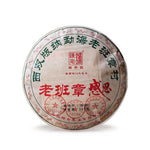Is Oolong Tea Black Tea
Oolong tea is a traditional Chinese tea that falls between green and black tea in terms of oxidation.
It undergoes partial oxidation, which gives it a unique flavor profile and distinct characteristics.
Oxidation Level
Oolong tea's oxidation level ranges from 20% to 80%. This varies based on the production process.
Bestsellers
Flavor Profile
You may notice floral, fruity, or even toasty notes. Each variety offers something different.
Appearance
The leaves can be rolled, twisted, or balled, affecting the tea's final look and taste.
Production Regions
Taiwan and China are renowned for oolong tea production. Each region's climate imparts unique flavors to its teas.
Health Benefits
Oolong tea contains antioxidants, which can support overall health. It also has caffeine, though usually less than black tea.
Brewing Tips
Use water just below boiling point. Steep for 3-5 minutes for optimal flavor.
Differentiating Oolong and Black Tea
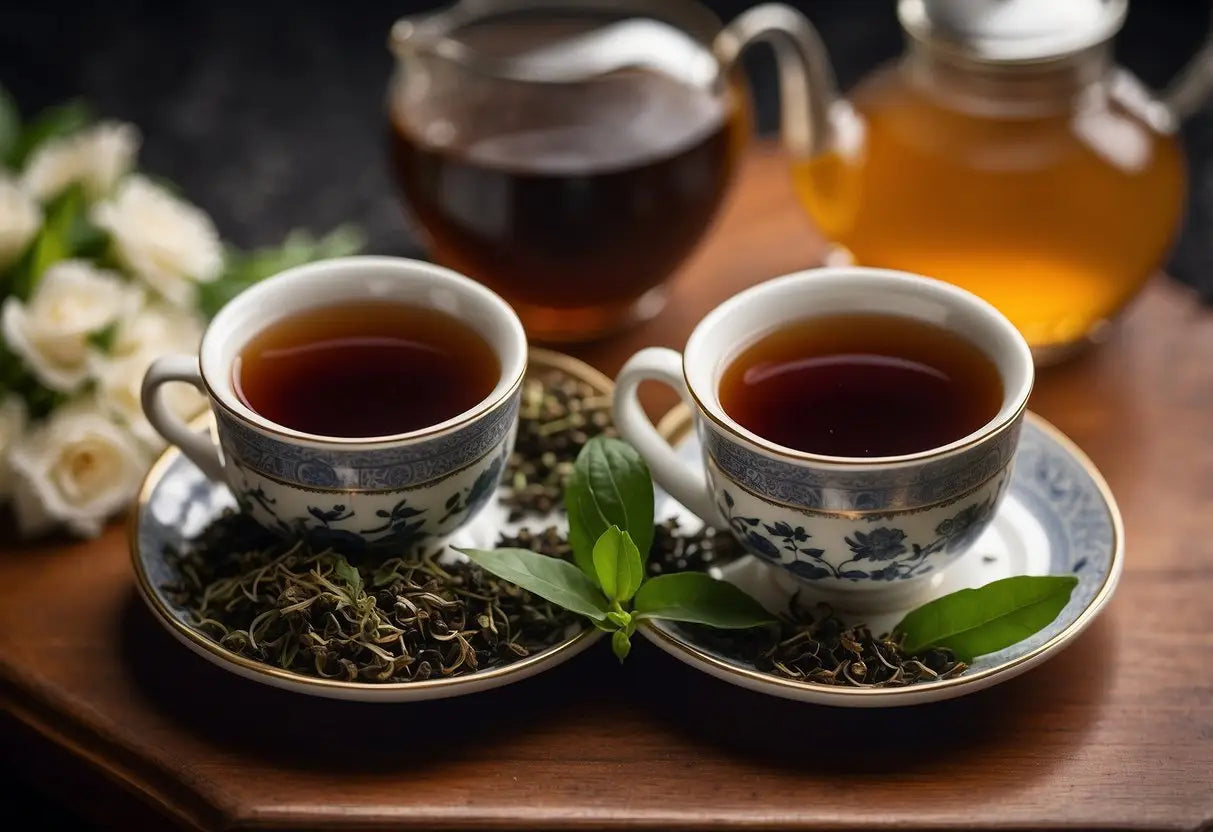
Oolong and black tea differ in various aspects, including processing methods, oxidation levels, and flavor profiles. Each type of tea offers unique characteristics and benefits.
Processing Methods
Oolong tea undergoes a semi-oxidation process, which lies between green and black tea. The leaves are withered, rolled, partially oxidized, then pan-fired or roasted to stop further oxidation. This method ensures the tea retains both floral and fruity notes.
Black tea is fully oxidized. The leaves are withered, rolled, fully oxidized, and then fired or dried. This full oxidation gives black tea its distinct dark color and robust flavor. Both teas employ specific techniques to achieve their unique qualities, but the degree of oxidation sets them apart.
Oxidation Levels
Oxidation levels play a crucial role in differentiating oolong and black tea. Oolong tea is partially oxidized, usually between 10% to 70%, depending on the desired flavor profile. This partial oxidation is what creates the balance between green and black tea characteristics.
Black tea, on the other hand, undergoes full oxidation, reaching nearly 100%. This complete oxidation process transforms the chemical composition of the leaves, resulting in a darker color and richer flavor. The oxidation level significantly influences the taste and appearance of each tea type.
Flavor Profiles
The flavor profiles of oolong and black tea vary considerably. Oolong tea is known for its complex and layered flavors. It can range from sweet and fruity to woody and roasted, often with floral undertones. The varying oxidation levels contribute to its diverse taste spectrum.
Lao Ban Zhang
Black tea possesses a more uniform flavor profile. It typically offers a bold, rich, and sometimes astringent taste. You might notice malty, earthy, and sometimes slightly sweet notes. The full oxidation process gives black tea its strength and depth, distinguishing it from the more nuanced oolong tea.
History and Origins
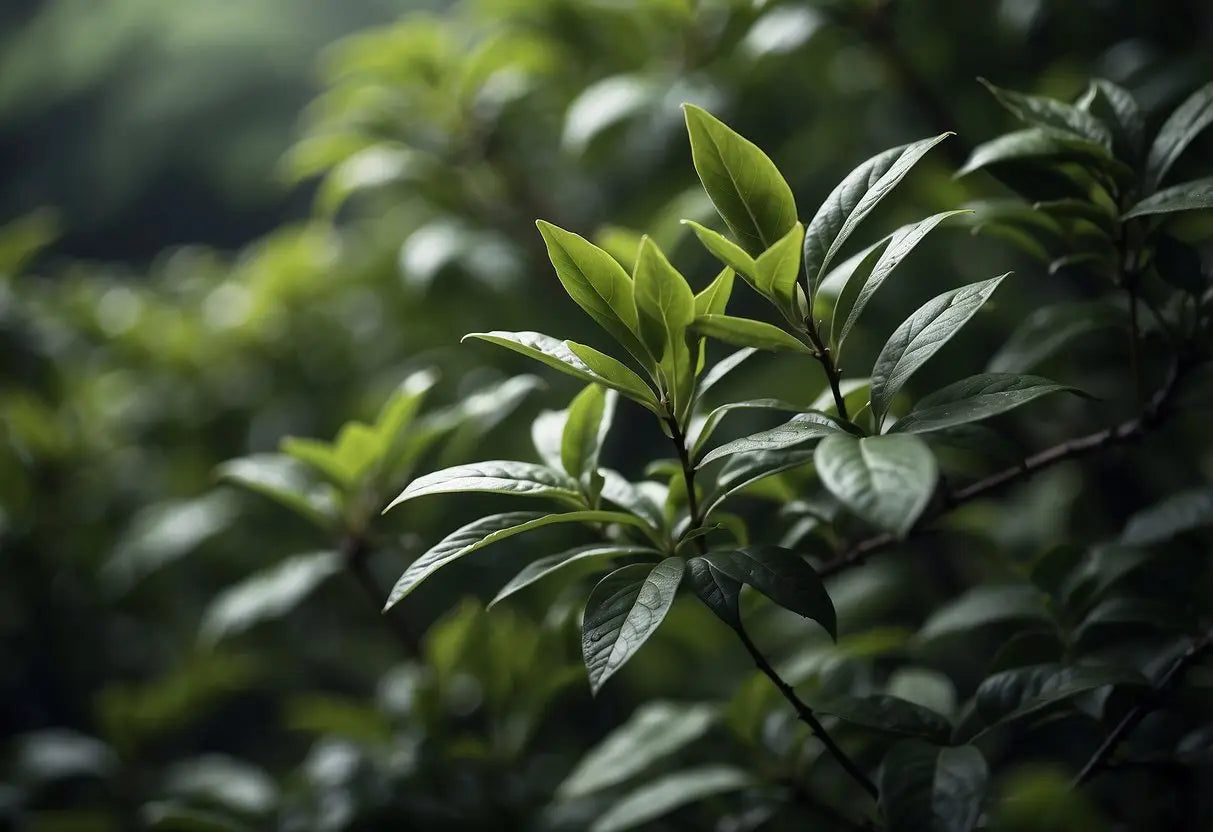
Oolong tea traces its origins to China, dating back over 1,000 years.
Regions:
- Fujian: Famous for producing high-quality oolong.
- Taiwan: Known for its unique variations and cultivation methods.
The processing of oolong tea involves partial oxidation, which places it between green and black tea.
Ancient Chinese tea artisans perfected this method to bring out complex flavors.
Oolong tea was historically reserved for the elite and used in tea ceremonies.
The name "oolong" translates to "black dragon" in Chinese. Some legends attribute the name to the shape of the tea leaves.
You will find rich cultural traditions surrounding its preparation and consumption. Today, oolong tea is enjoyed worldwide for its balanced flavor.
Cultivation and Regions
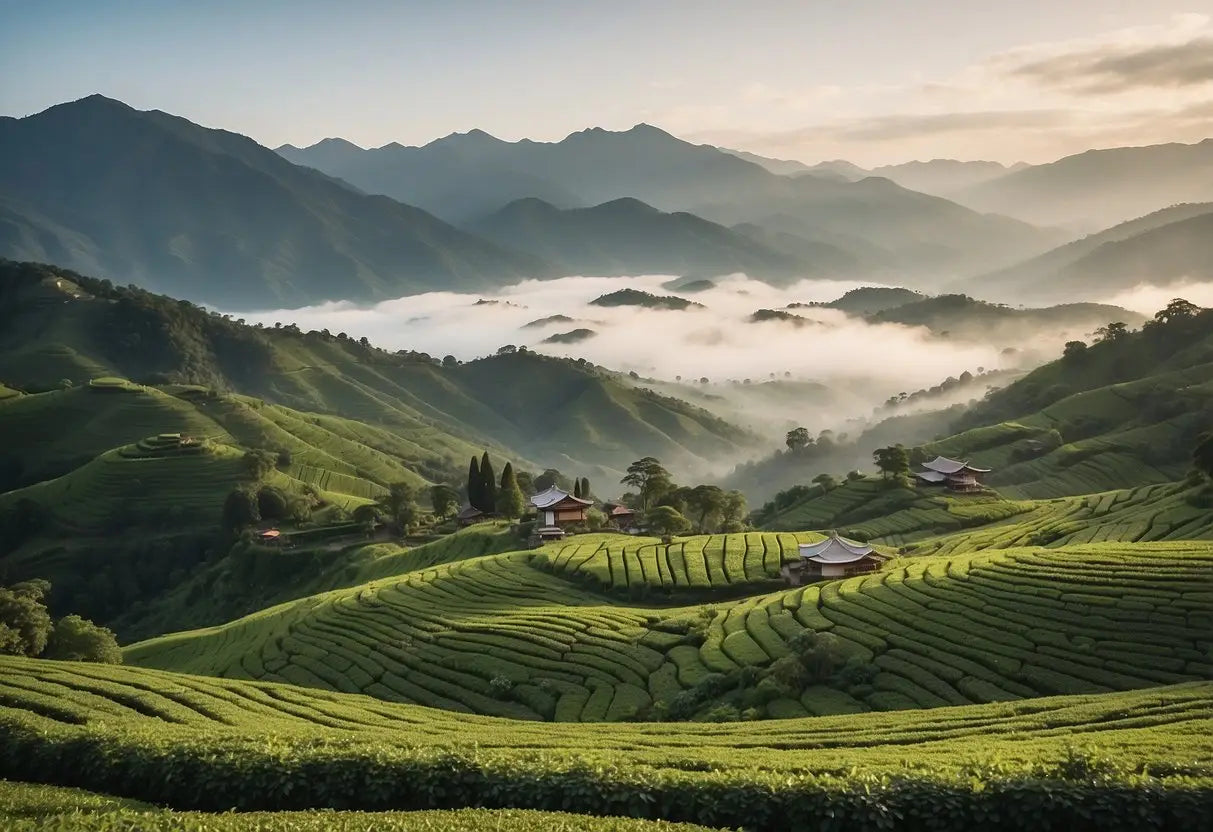
Oolong tea requires specific conditions for optimal growth. It thrives in warm climates with high humidity.
Taiwan is a major producer of oolong tea. The region's elevated terrain and frequent mist contribute to its unique flavor.
China, particularly in the Fujian province, is another leading region. The Wuyi Mountains and Anxi County are well-known for their oolong production.
In contrast, some oolong teas are cultivated in less traditional areas like Darjeeling, India. These teas offer a different, yet equally appealing profile.
Oolong tea plantations often use terracing techniques to maximize space and sunlight. This method helps improve the quality and quantity of the harvest.
The soil composition—rich in organic material—plays a crucial role. It enhances the tea plants' nutritional uptake.
Farmers typically hand-pick the tea leaves. This labor-intensive process ensures only the finest leaves are selected.
For irrigation, natural spring water is preferred. It provides the right minerals and helps maintain the health of the plants.
Key Regions for Oolong Tea
| Region | Notable Areas |
|---|---|
| Taiwan | Ali Shan, Dong Ding |
| China | Wuyi Mountains, Anxi County |
| India | Darjeeling |
You will find that climate, altitude, and soil collectively shape the quality of oolong tea. Each region offers a unique tasting experience.
Health Benefits and Risks
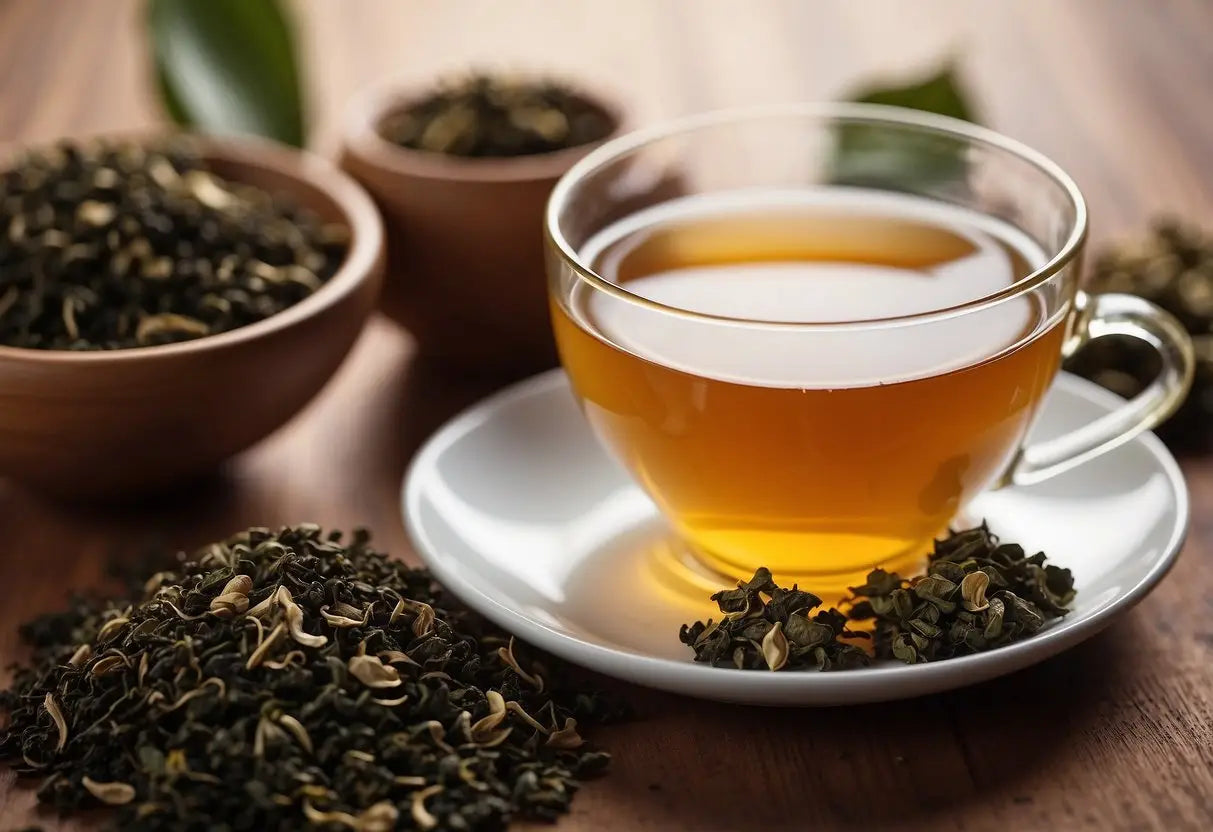
Oolong tea offers multiple health benefits, including aiding in weight management and supporting heart health. There are both similarities and differences compared to black tea.
Benefits of Oolong Tea
Oolong tea contains antioxidants that may improve your metabolism and help with weight loss. The polyphenols in it can enhance fat loss and boost energy levels. It may also improve skin health and reduce eczema symptoms.
Studies suggest oolong tea can lower LDL cholesterol and improve heart health. It contains fluoride, which supports dental health, reducing cavities and plaque. The antioxidants in oolong may also reduce the risk of chronic diseases.
Comparative Benefits with Black Tea
Compared to black tea, oolong tea might offer more varied benefits due to its unique production process. Both teas contain caffeine, which can enhance alertness, but oolong tea has a slightly lower caffeine content.
Oolong's unique oxidation process gives it a blend of the benefits found in green and black teas. You get antioxidants that help with oxidative stress, which is key for reducing inflammation and chronic disease risk.
Potential Risks
Oolong tea has caffeine, which can cause insomnia, jitters, and fast heart rate if consumed excessively. It's best to drink it in moderation to avoid these side effects. Some individuals may be sensitive to its caffeine content.
Fluoride in oolong tea, beneficial in small amounts, can lead to dental and skeletal issues if consumed excessively. Pregnant women should avoid large quantities due to caffeine content, which may affect fetal development.
Brewing Techniques
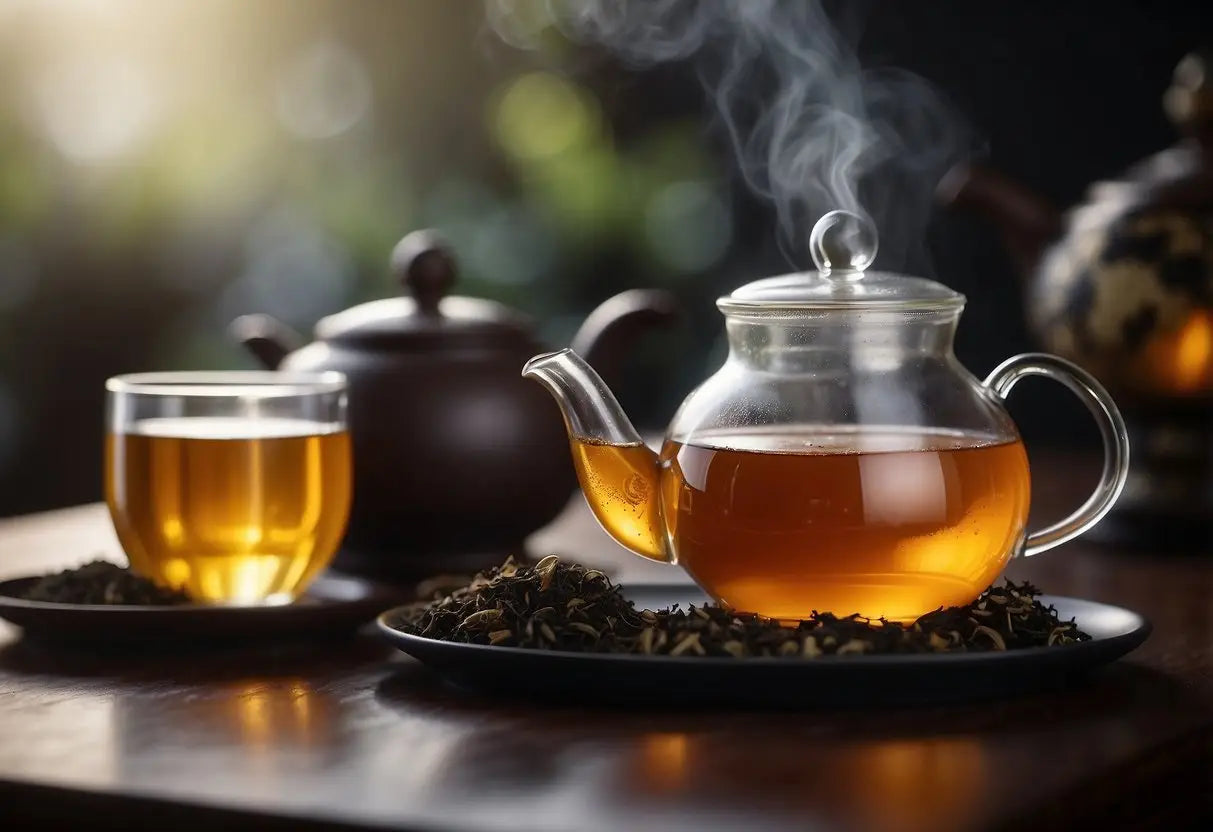
To brew oolong tea, start with quality loose-leaf tea or tea bags.
Equipment you'll need:
- Teapot or gaiwan
- Strainer (if using loose-leaf)
- Kettle
Steps for brewing:
- Heat Water: Use water just below boiling, around 85-95°C (185-203°F).
- Measure Tea: Use 1-2 teaspoons of loose leaves per cup.
- Rinse Leaves: Quickly rinse tea leaves with hot water to awaken the flavors.
Brewing Time Table:
| Oolong Type | First Steep | Second Steep | Subsequent Steeps |
|---|---|---|---|
| Light Oolong | 1-2 minutes | 2-3 minutes | 3-4 minutes |
| Dark Oolong | 2-3 minutes | 3-4 minutes | 4-5 minutes |
After placing the tea in your teapot, pour the hot water over the leaves. Cover and let it steep according to the times in the table.
Consider multiple infusions. Oolong tea can be steeped multiple times, each offering a different flavor profile. Increase the steeping time slightly with each infusion.
Use a strainer when pouring the tea into cups to keep leaves out.
For a potent experience, use a gaiwan and steep for shorter times.
Cultural Significance
Oolong tea holds a special place in various cultures, particularly in China and Taiwan.
In China, it is often a core component of traditional tea ceremonies. These ceremonies emphasize the art of preparation and appreciation, symbolizing respect and mindfulness.
Taiwan also has a rich history with oolong tea. It is deeply embedded in daily life, social events, and festivals.
Many Taiwanese regions are known for producing high-quality oolong tea. These areas have unique methods and traditions passed down through generations.
Oolong tea is celebrated for its diversity in flavor. This diversity is appreciated by tea connoisseurs around the world.
In Japan, oolong tea is popular for its health benefits. It is frequently consumed alongside meals.
It also has a growing popularity in Western countries. There, it is often marketed as a premium beverage.
Key Points:
- Core component in Chinese tea ceremonies
- Significant in Taiwanese social and cultural events
- Appreciated for diverse flavors
- Popular in Japan for health benefits
- Growing popularity in the West
Varieties of Oolong Tea
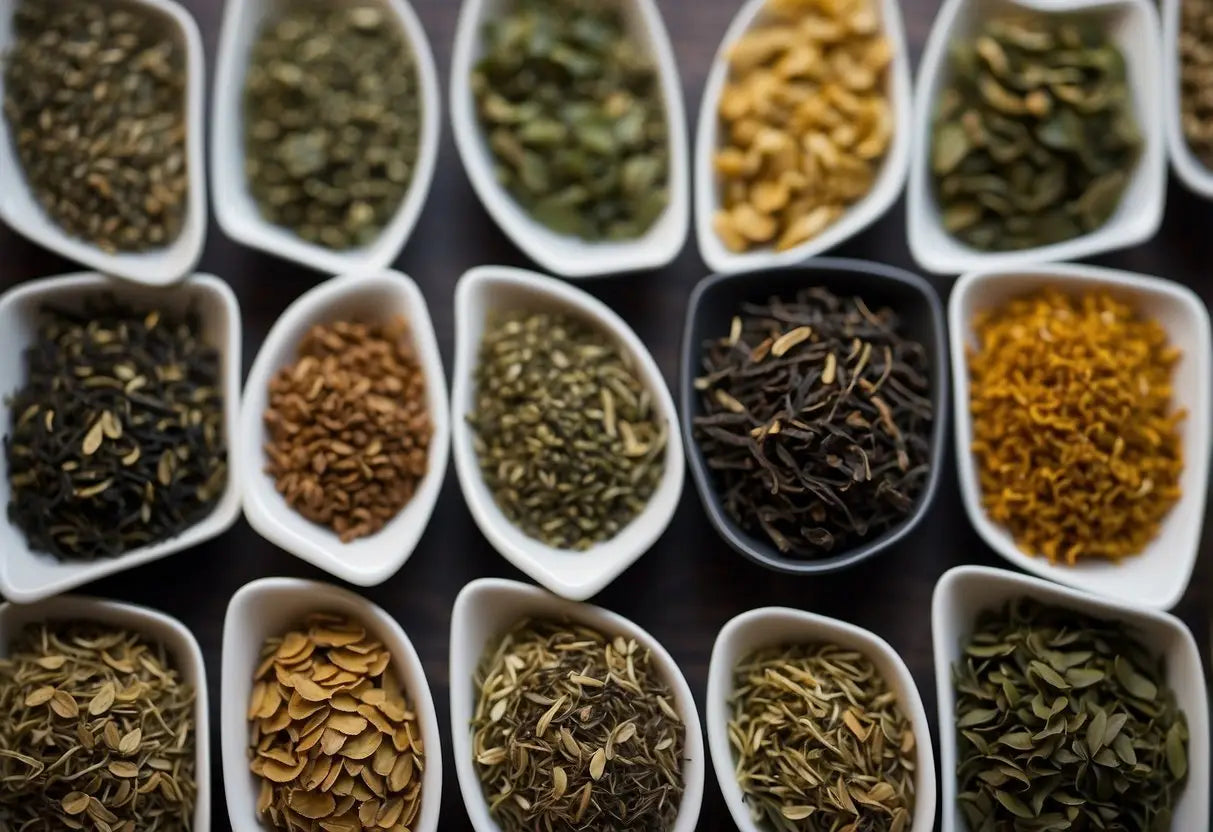
Oolong tea comes in many varieties, each with its unique characteristics. Some are light and floral, while others are more robust and roasted.
Tie Guan Yin (Iron Goddess of Mercy): This popular variety has a floral aroma and a sweet, lingering aftertaste. Originating from the Fujian province, it's often lightly oxidized.
Da Hong Pao (Big Red Robe): Known for its rich, earthy flavor, Da Hong Pao is a renowned rock tea from the Wuyi Mountains. It's heavily oxidized and has a distinct mineral taste.
Dong Ding (Frozen Summit): Hailing from Taiwan, Dong Ding oolong presents a balance between floral and creamy notes. It is medium-oxidized and often comes with a slight roasted flavor.
Oriental Beauty: This Taiwanese oolong is unique with its sweet, fruity flavor due to a natural insect bite affecting the leaves. It has a high oxidation level and a honey-like aroma.
-
Tie Guan Yin
- Origin: Fujian
- Features: Floral, sweet aftertaste
-
Da Hong Pao
- Origin: Wuyi Mountains
- Features: Earthy, mineral taste
-
Dong Ding
- Origin: Taiwan
- Features: Floral, creamy, roasted
-
Oriental Beauty
- Origin: Taiwan
- Features: Fruity, sweet, honey-aroma
Each of these varieties offers a different experience, reflecting their terroir and production method. Enjoy exploring these diverse flavors to find your favorite oolong.
← Older post Newer post →











